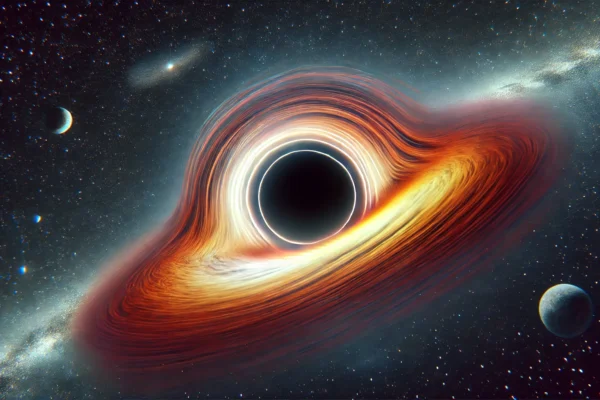
Category: Science

Ratan Tata: The Visionary Leader, Humble Philanthropist, and Animal Lover Who Left a Lasting Legacy
Ratan Tata, the former chairman of Tata Group, is remembered as one of India’s greatest business leaders. Born on December 28, 1937, Ratan Tata took over the leadership of Tata Group in 1991, transforming it into a global powerhouse. His vision for India, his humility, his love for animals, and his dedication to philanthropy made him an icon not just in the corporate world but also in the hearts of millions of people. In this article, we explore Ratan Tata’s most significant achievements, the values he embodied, his love for animals, and how his vision continues to shape India. The Early Life and Rise to Leadership Ratan Tata was born into the prominent Tata family, known for its industrial legacy. Despite his privileged background, Tata’s childhood was far from ideal. His parents separated when he was young, and he was primarily raised by his grandmother, Lady Navajbai Tata. Ratan Tata pursued his education at Cornell University, studying architecture and structural engineering, and later attended the Harvard Business School. He joined Tata Group in 1961, starting his career on the shop floor of Tata Steel, shoveling limestone and handling the blast furnace. This hands-on experience shaped his understanding of the challenges faced by workers and gave him a unique perspective on leadership. He gradually rose through the ranks and, in 1991, succeeded J.R.D. Tata as chairman of Tata Sons, marking the beginning of a new era for the conglomerate. Transforming Tata Group into a Global Powerhouse Under Ratan Tata’s leadership, Tata Group underwent a significant transformation. He focused on modernization, innovation, and expanding the company’s global footprint. Some of his most notable achievements include: Global Acquisitions Ratan Tata led Tata Group through a series of high-profile acquisitions that put the company on the global map. The acquisition of Tetley Tea in 2000, Corus Steel in 2007, and Jaguar Land Rover in 2008 were monumental moves that showcased Tata Group’s ambition and capability. These acquisitions helped establish Tata as a global brand and diversified the company’s portfolio across various sectors, including automotive, steel, and consumer goods. Launch of Tata Nano One of Ratan Tata’s most ambitious projects was the launch of the Tata Nano in 2008, often referred to as the “people’s car.” Priced at around $2,000, the Nano was the world’s cheapest car, aimed at making car ownership accessible to millions of Indian families. Although the Nano did not achieve commercial success, it remains a testament to Tata’s vision of providing affordable mobility to the masses. However, the journey of Tata Nano was not without challenges. Despite the noble intention behind it, the Nano faced significant hurdles. Many people viewed the car as being too cheap, which led to it being perceived as low-quality. Additionally, issues with production facilities, such as the protests over land acquisition in Singur, West Bengal, forced Tata to shift the manufacturing plant to Gujarat. These setbacks, combined with insufficient consumer interest, ultimately led to the Nano’s failure in the market. Ratan Tata often expressed his disappointment that the Nano did not succeed as intended, as he truly believed in its potential to transform transportation for Indian families. Expanding Tata Consultancy Services (TCS) Ratan Tata also played a pivotal role in expanding Tata Consultancy Services (TCS), which became one of the world’s largest IT services companies under his leadership. Today, TCS is a major player in the global IT industry, contributing significantly to India’s reputation as an IT hub. Taj Hotels and Indian Hospitality Ratan Tata’s leadership was instrumental in expanding the Taj Group of Hotels, making it synonymous with luxury and Indian hospitality. The Taj Mahal Palace Hotel in Mumbai, which faced a tragic terrorist attack in 2008, became a symbol of resilience. Tata’s compassionate response to the attack, where he ensured that every affected employee and their family received support, further solidified his image as a caring leader. A Humble Leader with a Heart of Gold Despite his immense success, Ratan Tata remained humble and approachable. He was known for his simplicity, often seen driving himself to work in a Tata car without the fanfare that usually surrounds business tycoons. His humility extended to his interactions with employees, whom he treated with respect and empathy, regardless of their position in the company. Tata’s humility was evident when he visited the families of employees affected by the 26/11 Mumbai attacks. He personally ensured that all those impacted received support, and he visited hospitals to meet the injured. This compassionate approach earned him admiration not just within Tata Group but across the country. Ratan Tata’s Love for Animals Ratan Tata’s love for animals was well-known. He was an advocate for animal welfare and frequently used his influence to support animal rights. Tata was known to rescue stray dogs and provide them with shelter. The headquarters of Tata Group in Mumbai, Bombay House, has a dedicated space for stray dogs, a reflection of Tata’s affection for animals. During the renovation of Bombay House in 2018, Tata ensured that a kennel was built to house the stray dogs that had made the building their home. This act of kindness highlighted his deep empathy for all living beings. He often shared stories and pictures of animals on his social media, using his platform to raise awareness about animal welfare issues. Philanthropy and Vision for India Ratan Tata’s contributions went far beyond the corporate world. He was deeply committed to philanthropy, and under his leadership, Tata Group continued its legacy of giving back to society. Around 66% of Tata Sons is owned by charitable trusts, and the profits are used to fund various initiatives in education, healthcare, and rural development. Education Initiatives Tata was a strong advocate for education and played a key role in establishing institutions like the Tata Institute of Social Sciences (TISS) and the Tata Medical Center in Kolkata. He also contributed to numerous scholarships for Indian students to study abroad, believing that education was the key to India’s progress. Healthcare Contributions Ratan Tata was instrumental in…

Aditya-L1: India’s First Solar Mission to Unlock the Secrets of the Sun
In September 2023, the Indian Space Research Organisation (ISRO) launched its first-ever mission to study the Sun: Aditya-L1. This mission is a monumental leap for India’s space program, marking its entry into dedicated solar research. Positioned at the **Lagrange Point 1 (L1)**, Aditya-L1 has the unique ability to observe the Sun without any interruptions, providing continuous data that will help scientists better understand solar dynamics. Here’s a closer look at the mission’s objectives and what it aims to achieve. Why Study the Sun? The Importance of Aditya-L1 The Sun is the source of life on Earth, but it also poses significant risks due to phenomena like solar storms, coronal mass ejections, and solar flares, which can disrupt satellite communications, GPS systems, and even power grids. By studying the Sun’s behavior, scientists hope to gain insights into these events and improve space weather predictions. Aditya-L1’s mission is crucial in helping us prepare for and mitigate the effects of solar activity on modern technology. Positioning at Lagrange Point 1 (L1) Aditya-L1 is positioned at the **L1 Lagrange Point**, which is about 1.5 million kilometers from Earth. This location offers an uninterrupted view of the Sun, as the gravitational forces of the Earth and the Sun are balanced, allowing the spacecraft to remain in a stable position. This is critical for continuous observation of solar activity, without the disturbances caused by Earth’s shadow. Key Objectives of Aditya-L1 The Aditya-L1 mission has several key objectives, all focused on understanding different aspects of the Sun’s behavior and how they affect space weather and Earth’s environment. Scientific Instruments Aboard Aditya-L1 Aditya-L1 is equipped with state-of-the-art instruments designed to observe and collect data on the Sun’s atmosphere, solar emissions, and magnetic fields. Here’s a brief overview of some of the key instruments: Global Impact of Aditya-L1’s Research Aditya-L1’s observations will not only benefit India but the entire global scientific community. The data it collects will help scientists around the world improve **space weather prediction models**, enhancing our ability to protect satellites, spacecraft, and power grids from solar storms. The mission will also complement solar observation efforts by other space agencies, such as NASA’s Parker Solar Probe and ESA’s Solar Orbiter, helping to fill knowledge gaps and deepen our understanding of the Sun’s activity. Conclusion: A Bold Step in Solar Research Aditya-L1 is a pioneering mission for India, placing ISRO at the forefront of solar research. By studying the Sun’s corona, solar winds, and magnetic fields, the mission will provide invaluable data that can protect Earth from the disruptive effects of solar activity. As India’s first solar mission, Aditya-L1 is a testament to ISRO’s growing capabilities and contributions to global space science. Call to Action: Stay tuned as Aditya-L1 continues to unlock the secrets of the Sun and contributes to the advancement of solar research worldwide!

India’s Latest Contributions to Space Research: Chandrayaan-3 and Beyond
India’s space exploration journey has been nothing short of remarkable, and in recent years, it has reached new heights. The Indian Space Research Organisation (ISRO) has led the way with groundbreaking missions that have put India among the top spacefaring nations. With successful lunar and solar missions, as well as ambitious plans for human spaceflight, India is cementing its position in the global space community. Let’s take a closer look at India’s latest contributions to space research, including the historic Chandrayaan-3 mission and the ambitious Aditya-L1 solar mission. Chandrayaan-3: India Lands on the Moon’s South Pole On August 23, 2023, India made history by becoming the first country to land a spacecraft on the unexplored south pole of the Moon. The Chandrayaan-3 mission, a follow-up to India’s previous lunar missions, successfully achieved a soft landing on the Moon, a feat that only three other nations (the USA, Soviet Union, and China) have accomplished. This mission was a significant milestone not only for ISRO but for global space exploration, as the south pole is considered a key area for future lunar research and exploration. The mission provided valuable scientific data, including the detection of sulfur and the generation of the first temperature-depth profile of the lunar south pole. This region holds great potential for water ice, which could be crucial for future human exploration of the Moon. Chandrayaan-3 also performed a technology demonstration, including a hop experiment using the Vikram Lander, showcasing India’s engineering prowess in space technology. Chandrayaan-3’s success has inspired a new generation of scientists and engineers in India, proving that even with a fraction of the budget of other space agencies, ISRO can achieve world-class results. This mission solidified India’s place among the elite space nations and paved the way for more ambitious lunar and planetary missions in the future. Aditya-L1: India’s First Mission to Study the Sun Following the success of Chandrayaan-3, ISRO launched Aditya-L1 in September 2023, India’s first mission dedicated to studying the Sun. Aditya-L1 is positioned at the Lagrange Point 1 (L1), about 1.5 million kilometers from Earth, where the gravitational forces of Earth and the Sun balance each other. This location allows the spacecraft to have a continuous, uninterrupted view of the Sun. The primary goal of Aditya-L1 is to study the Sun’s outermost layer, known as the corona. This mission aims to provide insights into solar storms and space weather, which can affect satellite communications, navigation systems, and even power grids on Earth. By understanding solar activity, scientists can improve predictions of space weather and better protect critical infrastructure from the Sun’s powerful solar winds. Aditya-L1 marks India’s entry into solar research, placing it alongside major space agencies like NASA and the European Space Agency (ESA) in the study of our closest star. It is a significant step in India’s growing capabilities in space science and exploration. The Gaganyaan Mission: India’s First Human Spaceflight Looking ahead, one of ISRO’s most anticipated missions is the Gaganyaan mission, set to make India the fourth nation to send humans into space. Gaganyaan will carry Indian astronauts to low Earth orbit for a three-day mission, showcasing India’s capabilities in human spaceflight. The mission is expected to launch in 2024-2025 and will include multiple unmanned and manned tests before the final mission, ensuring the safety and success of the crew. This mission is part of India’s broader ambition to develop human spaceflight capabilities, and ISRO is already working on crew escape systems, environmental control, and life support systems to ensure astronaut safety. Gaganyaan is expected to open the door for future crewed space missions, including possible lunar or Mars missions. India’s Collaborations and Future Missions India’s contributions to space research are not limited to its own missions. ISRO has entered into key international collaborations, such as its partnership with NASA on the NISAR (NASA-ISRO Synthetic Aperture Radar) mission. Set to launch in 2024, NISAR will monitor Earth’s surface for environmental changes, natural disasters, and shifts in ecosystems. This mission will help improve disaster management and environmental monitoring globally. Additionally, ISRO is working on developing technologies for Reusable Launch Vehicles (RLVs), which could drastically reduce the cost of space travel and make future missions more sustainable. The Space Docking Experiment (SPADEX) is another important project that will demonstrate autonomous docking between spacecraft, a key technology for long-term space missions. Conclusion: India’s Bold Vision for Space Exploration From landing on the Moon’s south pole with Chandrayaan-3 to exploring the Sun with Aditya-L1, India’s contributions to space research are reshaping the global landscape of space exploration. ISRO’s success, achieved with a fraction of the budget of larger space agencies, demonstrates the ingenuity and ambition driving India’s space program. As India prepares for future human spaceflights and interplanetary missions, the country is set to play a pivotal role in humanity’s journey to the stars. Call to Action: Stay tuned for more exciting developments in India’s space exploration journey as ISRO continues to push the boundaries of science and technology!

The Science Behind Black Holes and India’s Role in Unraveling Their Mysteries
Black holes are some of the most fascinating and enigmatic objects in the universe. These cosmic giants captivate scientists and the general public alike due to their incredible gravitational pull and ability to warp the very fabric of space and time. But did you know that India has played a crucial role in the study of black holes? From pioneering scientists like Subrahmanyan Chandrasekhar to India’s ambitious space missions, the country has significantly contributed to our understanding of black holes. In this blog, we’ll explore both the science behind black holes and India’s important contributions to this field. What is a Black Hole? A black hole is a region in space where the gravitational pull is so strong that not even light can escape. Black holes form when massive stars collapse under their own gravity at the end of their life cycles. At the heart of a black hole lies a point of infinite density known as the singularity, where space-time curves infinitely. Surrounding the singularity is the event horizon—the boundary beyond which nothing can return. Subrahmanyan Chandrasekhar: A Pioneer of Black Hole Physics Indian-American astrophysicist Subrahmanyan Chandrasekhar (1910-1995) revolutionized our understanding of stellar evolution, which laid the foundation for black hole theory. In 1930, while studying at Cambridge, Chandrasekhar proposed that stars with masses above a certain limit—now known as the Chandrasekhar Limit—would not form white dwarfs, but instead would collapse into denser objects like black holes or neutron stars. Chandrasekhar’s ideas were initially ridiculed by his contemporaries, including the renowned British astrophysicist Arthur Eddington. However, his theories were later proven correct, and he went on to win the Nobel Prize in Physics in 1983 for his contributions to the understanding of stellar evolution, including his work on black holes. Chandrasekhar’s discovery was pivotal in the development of black hole physics, earning him a place as one of the greatest astrophysicists of the 20th century. C.V. Vishveshwara: The “Black Hole Man of India” C.V. Vishveshwara, often referred to as the “Black Hole Man of India,” was one of the first scientists to explore the stability of Schwarzschild black holes. In the 1970s, he discovered the quasinormal modes of black holes, which describe how black holes “ring” like a bell when disturbed. These vibrations, caused by perturbations in black holes, play a key role in the detection of gravitational waves, which were first observed in 2015. Vishveshwara’s work paved the way for modern gravitational wave astronomy, furthering our understanding of black hole dynamics. India’s Space Exploration: The Astrosat Mission India’s space agency, the Indian Space Research Organization (ISRO), has made significant strides in black hole research through its space missions. In 2015, ISRO launched Astrosat, India’s first dedicated multi-wavelength space observatory. One of its key missions is to study black holes by observing the high-energy X-rays emitted by these enigmatic objects. By detecting X-ray emissions, scientists can gain insights into the properties of black holes and other celestial phenomena. In addition to Astrosat, ISRO has been involved in international collaborations aimed at exploring black holes and other extreme cosmic events. These efforts contribute to the global scientific community’s understanding of black holes and highlight India’s growing role in space exploration. The First Image of a Black Hole In April 2019, the world was captivated by the first-ever image of a black hole, captured by the Event Horizon Telescope (EHT). This historic image showed the supermassive black hole located in the galaxy M87, approximately 55 million light-years from Earth. The image revealed a glowing ring of gas and dust surrounding the black hole’s event horizon, with the dark center representing the black hole itself. India contributed to this monumental achievement through its scientific collaborations and research on black hole imaging. The success of the EHT project underscores the importance of global cooperation in astrophysics. Hawking Radiation and the Future of Black Hole Research One of the most exciting theories about black holes comes from renowned physicist Stephen Hawking, who proposed that black holes are not entirely black. According to his theory, black holes emit small amounts of radiation—now called Hawking radiation. Over time, this causes black holes to lose mass and eventually “evaporate.” This discovery has profound implications for our understanding of black holes, quantum mechanics, and the fate of stars. Indian scientists continue to contribute to black hole research, with future projects planned to explore these enigmatic objects even further. As technology advances, India’s space missions and scientific community are expected to play a critical role in unraveling the remaining mysteries of black holes. Conclusion: India’s Role in the Study of Black Holes Black holes are not just a cosmic curiosity—they are gateways to understanding the fundamental forces of the universe. From Subrahmanyan Chandrasekhar’s pioneering work to ISRO’s cutting-edge space missions, India has played a crucial role in black hole research. As we continue to explore the mysteries of these cosmic giants, India’s contributions to astrophysics will remain essential in advancing our knowledge of the universe. Call to Action: Fascinated by black holes and space exploration? Stay tuned to the latest research and discoveries by following India’s growing role in the global space race!

How Climate Change is Devastating Coral Reefs: Can We Save Them?
Coral reefs, often called the “rainforests of the sea,” are some of the most diverse ecosystems on Earth. However, these vibrant ecosystems are now facing their greatest challenge: climate change. Rising sea temperatures, ocean acidification, and increased coral bleaching are taking a severe toll on coral reefs worldwide. In this blog, we’ll explore how climate change is impacting coral reefs and what steps we can take to save these underwater treasures. What is Coral Bleaching? Coral bleaching occurs when corals, stressed by rising sea temperatures, expel the algae (zooxanthellae) living in their tissues. These algae are vital to coral health, providing them with food and their vibrant colors. Without these algae, corals turn white (bleach) and struggle to survive. Although corals can recover from short bleaching events, prolonged stress often leads to death. Ocean Acidification: A Silent Threat As the oceans absorb more carbon dioxide (CO2) from the atmosphere, their pH levels drop, resulting in ocean acidification. This process makes it difficult for corals to build their calcium carbonate skeletons. Over time, this weakens coral structures, making them more susceptible to damage from storms and human activities. Ocean acidification also affects other marine organisms, disrupting entire ecosystems that rely on coral reefs for survival. Why Coral Reefs Matter Coral reefs are critical to the health of the ocean and the planet. They support about 25% of all marine life, providing habitats and shelter for fish and other species. Beyond biodiversity, coral reefs also offer protection for coastal communities by acting as natural barriers against storms and erosion. Additionally, they contribute to global food security and local economies through tourism and fishing. Steps to Protect Coral Reefs Although the outlook seems bleak, there are steps we can take to mitigate the effects of climate change on coral reefs. Here are some of the most effective strategies: Long-Term Impacts: What’s at Stake? Without immediate action, coral reefs could become a distant memory within the next few decades. The loss of coral reefs would lead to the collapse of marine ecosystems, the extinction of countless species, and significant economic losses for coastal communities that depend on reefs for fishing and tourism. However, it’s not too late. By addressing the root causes of climate change and working together globally, we can help protect these invaluable ecosystems for future generations. Conclusion: Hope for Coral Reefs Climate change may be the greatest challenge coral reefs have ever faced, but there is hope. Through sustainable practices, conservation efforts, and reducing our carbon footprint, we can help protect these vital ecosystems. Coral reefs are resilient, and with the right actions, we can ensure they survive and thrive for generations to come. The time to act is now—our planet’s coral reefs depend on it. Call to Action: Ready to make a difference? Reduce your carbon footprint, support coral reef conservation programs, and raise awareness about the importance of protecting our oceans.

